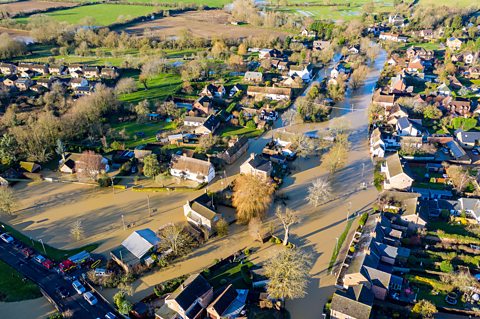Case study - Storm Bella, 2020
In December 2020, a large area of low pressure developed in the Atlantic Ocean. This led to persistent heavy rain and very strong winds across much of the United Kingdom. Storm Bella was one of the most powerful storms of the year.
Causes
Storm Bella was caused by a low-pressure system that travelled from the Atlantic Ocean to the UK.
- Low pressure is formed when an air mass rises.
- As the air rises, it cools and any moisture within it condenses to form clouds.
- The clouds grow larger and particles of water within it join together and fall to the ground as rain.
- New air rushes in to fill the space left by the rising air mass. This can create strong winds.
Intense low pressure systems lead to very heavy rain and very strong winds.
Impacts
Social
- В鶹ԼЕДs were flooded in Oxfordshire, Gloucestershire, Northamptonshire and Bedfordshire.
- Thousands of families were evacuated over the Christmas period.

Economic
- The Welsh Grand National could not go ahead as the course was waterlogged.
- Many businesses were left without electricity.
- Rail services and cross-channel ferries were disrupted, leading to a loss of income.
Environmental
- Rivers were significantly altered with increased rates of erosion.
- Many trees were uprooted by the wind and floodwater.
- For the first time ever, the UK was able to generate over half of its electricity from wind power.
Reducing the risks
The Met Office is a national service that keeps track of the UK weather. They give names to the most severe winter storms in the UK. This can help to make the public aware of storms, so that they can plan for the dangers faced when a severe storm passes over the country.
The UK government spends billions of pounds on flood defence schemes across the country. They build and maintain defences such as flood walls, embankments and culverts. Culverts are tunnels that carry water beneath the ground.